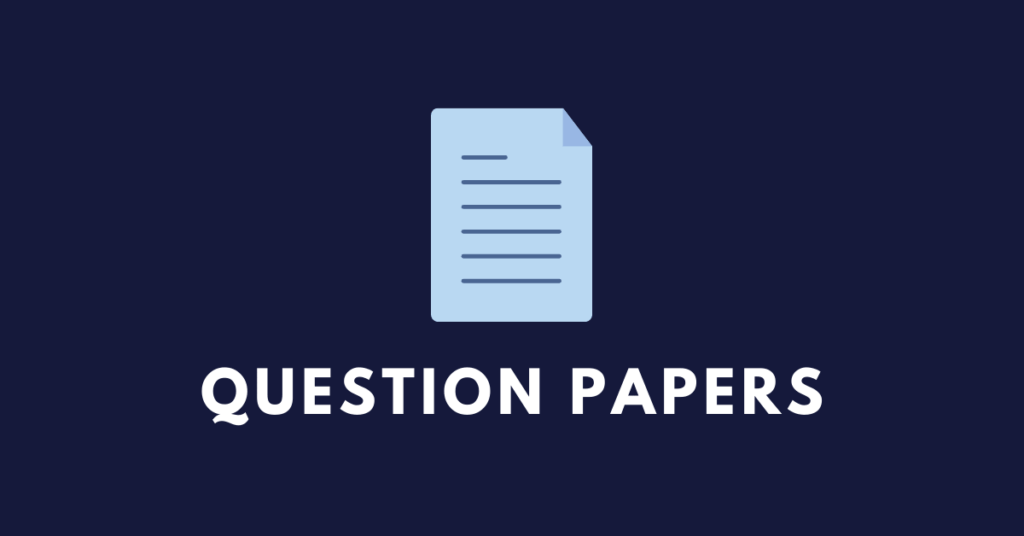Disclaimer: The given NBSE Class 10 Bookkeeping & Accountancy 2020 question paper has been sourced from NBSE
*******
Total marks : 70 || Time : 3 hours
General Instructions:
- Approximately 15 minutes are allotted to read the question paper and revise the answers.
- The question paper consists of 22 questions. All questions are compulsory.
- Internal choice has been provided in some questions.
- Marks allocated to every question are indicated against it.
N.B: Check that all pages of the question paper are complete as indicated on the top left side.
Choose the correct answer from the given alternatives:
1. The statement of assets and liabilities is a(1)
(a) balance sheet
(b) trial balance
(c) trading account
(d) profit and loss account
2. Capital expenditures are recorded in(1)
(a) trading account
(b) profit and loss account
(c) income statement
(d) balance sheet
3. Which of the following is an advantage of opening a current account? (1)
(a) maintaining minimum balance
(b) no interest
(c) facility of overdraft
(d) bank charges
4. The most suitable bank account for a businessman will be(1)
(a) current account
(b) fixed deposit account
(c) recurring deposit account
(d) savings account’
5. A bank reconciliation statement reconciles the(1)
(a) ledger with the journal
(b) petty cash book with the bank account
(c) day book with the bank statement
(d) passbook with the cash book
6. Encashing the bill or borrowing from the bank on the security of the bill is known as(1)
(a) retaining the bill
(b) endorsement of the bill
(c) discounting the bill
(d) none of these
7. In Bills of Exchange, how many copies are prepared for Foreign Bills? (1)
(a) two
(b) three
(c) one
(d) four
8. Errors committed due to incomplete knowledge of accounting are (1)
(a) errors of principles
(b) compensating errors
(c) clerical errors
(d) errors of omission
9. Depreciation under the straight-line method (1)
(a) increases each year
(b) remains constant each year
(c) decreases each year
(d) none of these
10. Depreciation is calculated on (1)
(a) wasting assets
(b) current assets
(c) fictitious assets
(d) fixed assets
Answer the questions in about 20-30 words:
11. What is a trading account? (2)
12. What is a bank reconciliation statement? (2)
13. Write a note on minus balance. (2)
14. What are errors of commission? (2)
15. What is meant by rectification entry? (2)
16. Write any two special features of depreciation. (2)
Answer the questions in about 30-50 words:
17. Explain briefly any three objectives of the profit and loss account. (3)
18. Explain any three limitations of the final account. (3)
19. Mention and explain any three benefits of E-banking to customers. (3)
20. What is a promissory note? Mention the parties of a promissory note. (2+1=3)
21. Mention and explain any three advantages of the straight-line method. (3)
22. Write any three differences between the straight-line method and the diminishing balance method. (3)
Answer the questions in about 70-100 words:
23. a. Explain five differences between profit and loss accounts and balance sheets. (5)
Or
b. Prepare trading, profit and loss account and balance sheet as on 31st December 2018, from the following trial balance of Mr Robert.
| Debit Balance | Credit Balance | ||
| Stock (1-1-2018) | 9,600 | Capita | 14,400 |
| Rent and rates | 4,500 | Sales | 87,000 |
| Purchases | 51,000 | Trade Creditors | 9,600 |
| Cash at bank | 6,400 | ||
| Fixtures and fittings | 4,800 | ||
| Trade expenses | 2,000 | ||
| Carriage inward | 800 | ||
| Sundry debtors | 5,700 | ||
| Wages | 9,200 | ||
| Salaries | 17,000 | ||
| 1,11,000 | 1,11,000 |
The value of stock in hand on December 31, 2018, was Rs 11,000.
24. a. Explain any five types of banks. (5)
Or
b. Explain any five new services provided by banks through computerized equipment.
25. a. State and explain any five causes for disagreement of the cash book and pass book. (5)
Or
b. Prepare a bank reconciliation statement from the following particulars as on 31st July 2018.
i) Balance as per pass book Rs 500
ii) Three cheques of Rs 60, Rs 40 and Rs 15 issued in July 2018 were presented for payment to the bank in August 2018.
iii) Two cheques of Rs 50 and Rs 65 sent to the bank for collection were not entered into the passbook till July 31st, 2018.
iv) The bank charged Rs 46 for its commission and allowed interest of Rs 10, which was not entered into the bank account.
26. a. Explain any five differences between bills of exchange and promissory notes. (5)
Or
b. X draws a bill on Y for Rs 4,000 on 1st July 2018 payable after 4 months. Y accepts and returns it to X. The bill was discounted by X for Rs 3,850 and duly met on the due date. Pass the necessary journal entries in the books of X and Y.
27. a. Explain the errors which are responsible for disagreement of trial balance. (5)
Or
b. An accountant found the following errors of the previous year after preparing the financial account during the current year. Pass journal entries to rectify these errors:
i) Purchases from Gabriel were not awarded in the books Rs 200
ii) Sales to Samuel amounting to Rs 3,000 was wrongly passed through the sales book with Rs 300
iii) Wages paid to John were debited to John with Rs 1,000
iv) Repairs on buildings amounting to Rs 1,800 was omitted.
28. a. Explain the factors affecting the amount of depreciation. (5)
Or
b. Amenla purchased a plant on January 1, 2009, for Rs 48,000. She depreciates it every year on December, 31 using the diminishing balance method at a rate of 20% per annum. Show machinery account and depreciation account for the first 4 years.
*******

Hello